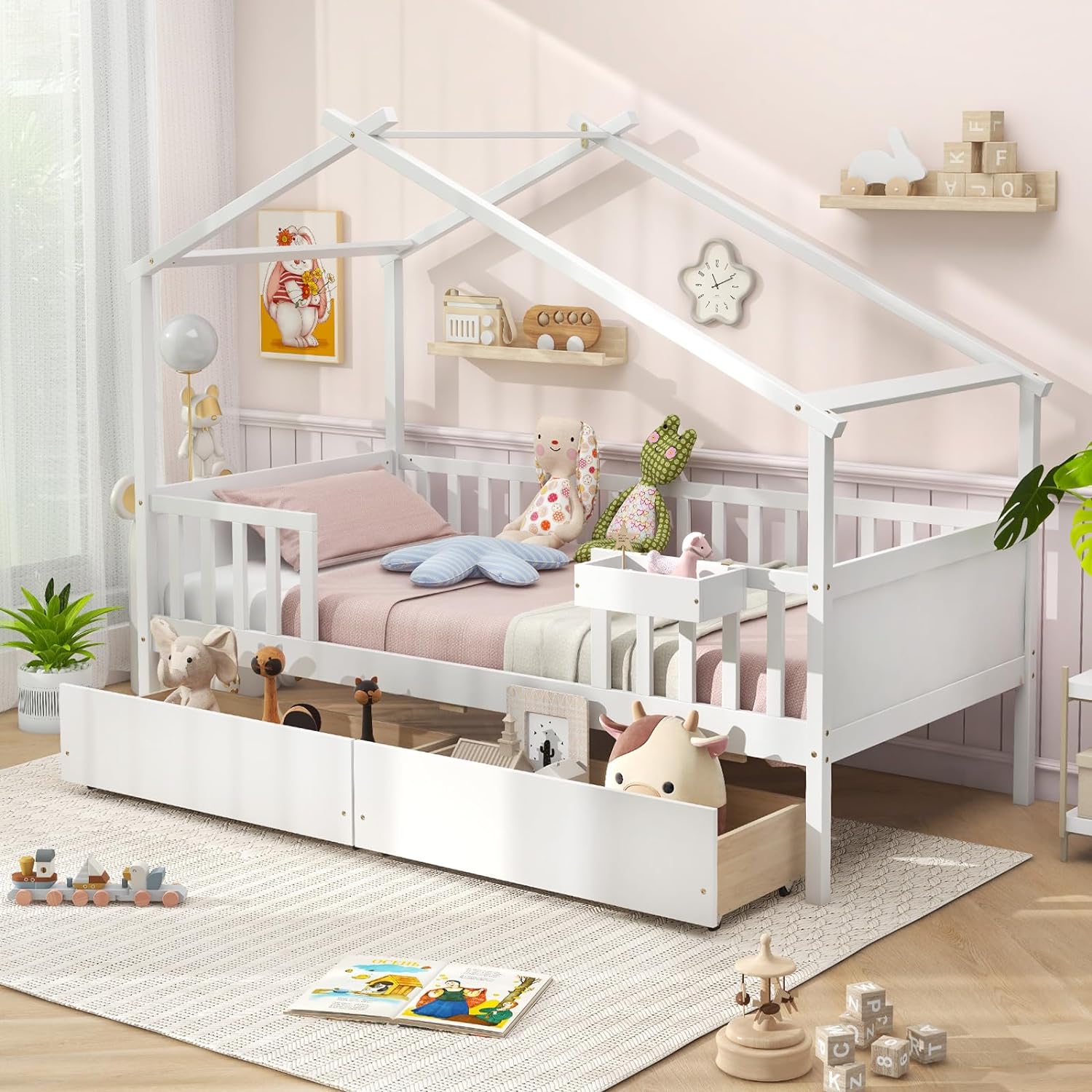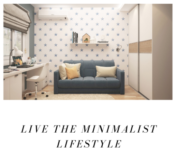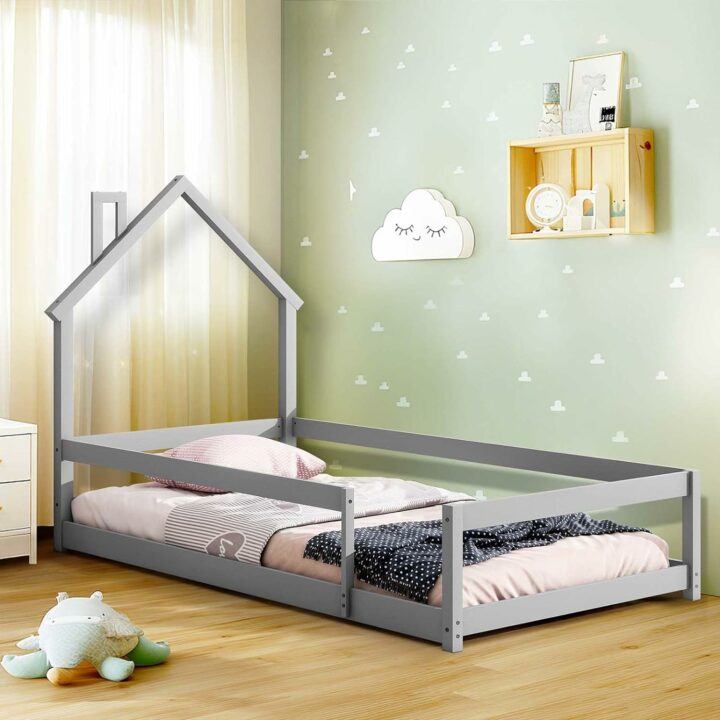Table of Contents
What Mattress to Use for Montessori Floor Bed: Tips for Choosing the Best One
Choosing the right mattress for your child’s Montessori floor bed can feel a bit overwhelming. The best mattress for a Montessori floor bed is typically a firm, thin mattress that provides good support and ensures safety. There are several great options out there, from memory foam to spring mattresses.

Montessori floor beds are designed to give your child independence and allow them to explore freely. The mattress should be low-profile, making it easy for your little one to get in and out of bed. Many parents prefer twin or full-size mattresses to provide more space and longevity.
When picking a mattress, consider factors like breathability and firmness. You might look into models that specifically mention their compatibility with Montessori floor beds. For example, the Linenspa 6-Inch Spring Mattress or the Linenspa 8-Inch Memory Foam Mattress both come highly recommended due to their support and comfort.
Key Takeaways
- Firm, thin mattresses are ideal for Montessori floor beds.
- Twin or full-size options are commonly chosen.
- Look for breathability and good support in a mattress.
- Toddler floor bed: Look for a bed for toddler with rounded edges and guard rails to keep your little one safe.
- The house-style bed is a popular choice for Montessori floor beds, known for its simple design and lack of rails.
- It is advisable to be careful when buying floor beds for babies under 1, as they may not be suitable for this age group.
Understanding Montessori Floor Beds
Montessori floor beds focus on the philosophy of fostering independence and autonomy in children. These low beds encourage healthy development and provide a safe environment for toddlers to explore sleep cues.
Philosophy of Montessori
The Montessori method aims to promote independence and confidence in children. By offering a floor bed, you allow your child the freedom to get in and out independently. This aligns with Maria Montessori’s belief in creating an empowering environment for kids.
Montessori floor beds support self-regulation. Children learn to recognize their own sleep cues and develop routines. This setup also reduces the risk of falling, as the bed is close to the ground. It enhances their sense of autonomy by giving them control over their sleep space.
Benefits of a Floor Bed
A Montessori floor bed encourages your child’s natural development. It eliminates the need for a toddler bed with bars, giving the child easier access to their surroundings. This can boost their confidence as they move freely around their environment.
The floor bed is great for creating a cozy and inviting sleep area. This can make bedtime more enjoyable and less of a struggle. It also provides a comfortable spot for caregivers to join their child for reading or snuggling.
Furthermore, floor beds can accommodate various sleeping styles. They can transition smoothly from a crib mattress to a twin or full-size mattress, meeting your child’s needs as they grow. Offering such flexible, safe, and supportive bedding options aligns perfectly with Montessori’s ideas of child-led growth.
Choosing the Right Mattress

When picking a mattress for a Montessori floor bed, consider matching the mattress with the bed frame, the thickness for safety and comfort, and durable materials that can withstand frequent use.
Organic materials such as cotton, wool, and latex promote sustainability by being harvested without the use of pesticides, chemicals, or energy-intensive methods.
Natural materials have better breathability than synthetic ones, helping regulate your child’s body temperature for improved sleep.
Mattress Compatibility
It’s important to make sure the mattress fits well with the Montessori floor bed frame. A firm crib mattress is ideal for children under two. Any firm, quality mattress that fits the bed frame will work well. Some parents go for a simple crib mattress placed right on the floor.
Make sure the mattress size matches the bed frame to avoid gaps that could be unsafe. You can explore different sizes and brands, but the key is a snug fit to ensure your child’s safety.
Considering Mattress Thickness
The thickness of the mattress matters for both comfort and safety. A mattress that is too thick can make it hard for your child to get in and out easily. Aim for a mattress that is firm yet comfortable and about 4-6 inches thick.
A very thick mattress might not provide the same level of support and could be less safe for smaller children. Keep things simple with a moderate thickness that allows for easy movement and access.
Material and Durability
Choose a mattress made with durable and safe materials. Look for organic and non-toxic materials. These options are often hypoallergenic and safer for young children.
A high-quality mattress should last several years, even with frequent use. Consider materials like latex or memory foam for durability and comfort. Avoid mattresses with harmful chemicals, ensuring a healthy sleeping environment for your child.
Montessori Floor Bed Frames
When choosing a Montessori floor bed frame, consider the material, size, and design options that best suit your child’s needs. The right frame can provide the freedom of movement and sense of independence that are key to the Montessori philosophy of spatial awareness..
Common Frame Materials
Many Montessori floor bed frames are made from pine wood. This material is favored for its durability and natural look. Some frames are also available in white finishes, adding a clean and modern touch to your child’s room.
When you think of a Montessori bed, you may picture a Classic house-like wooden frame with small lights dangling from the top.
Another popular choice is the metal frame, which offers strength and a sleek, contemporary design. Although less common, you may find frames made from composite materials or other types of wood like birch.
Size and Dimensional Considerations
It’s important to choose the right size for the Montessori floor bed. Most frames come in twin, toddler, or full size. The twin size is a great option as it provides space for growth without taking up too much room.
Dimensions are key. For instance, the Little Seeds Metal House Bed measures 77.5″ L x 40.5″ W x 63″ H. Ensure the frame and mattress combination fits well in your room and allows for safe, easy movement.
Design Options
House-shaped designs are especially popular. They can stimulate imagination and create a cozy feel. For example, a Montessori house bed often features a simple frame and open structure, making it appealing and versatile.
You can find designs that range from modern and contemporary to rustic. A house bed with a minimalist style usually blends well with other furniture, while a rustic look might include natural wood finishes and simpler lines.
When browsing options, consider conversion features that allow the bed to adapt as your child grows.
Safety and Accessibility
When choosing a mattress for a Montessori floor bed, making a conscious decision focusing on safety and ease of access is key. Ensuring the space is safe and accessible allows your child to move independently while staying protected from potential hazards.
Protective Measures
Safety is a top priority when selecting a mattress for a Montessori floor bed. It’s important to choose a mattress that fits snugly within the bed frame to prevent any gaps where small limbs could get caught. Consider adding protective rails around the bed to keep young toddlers from rolling out during sleep.
Outlet covers and cord management are crucial. Toddlers are curious and might explore the edges of the bed area. Ensure that any electrical outlets near the bed are properly covered. Keep cords and other hazards out of reach to avoid accidents.
A solid and firm mattress is ideal. It supports your child’s spine and reduces the risk of suffocation. Avoid overly soft mattresses, which can pose suffocation risks. Using a mattress protector can also help maintain hygiene since it’s easy to clean in case of spills or accidents.
Ease of Access for Toddlers
Ease of access is essential for promoting independence in toddlers. A floor bed is designed to be at a height that allows toddlers to climb in and out on their own.
Ensure the mattress is placed directly on the floor or on a low platform bed frame. This allows your child to freely move around, which is important for their development.
If you choose to use a frame, make sure it’s low-profile, like the Little Seeds house bed. This kind of bed frame combines accessibility with safety and provides a fun, imaginative space for your child.
Encourage independence by keeping the bed area clear of obstacles. This setup respects their natural desire to explore while ensuring their safety.
Adding Fun and Functionality
Making a Montessori floor bed a fun and functional part of your child’s room can be simple and rewarding. This involves integrating play space and ensuring compatibility with other furniture while keeping the focus on the childhood development.
Incorporating Play Space
Creating a play space around the floor bed can make the room more enjoyable. You can achieve this by placing soft rugs or play mats next to the bed. These can be used for reading, playing with toys, or simply sitting comfortably.
Add some pillows and small cushions for extra comfort. A small bookshelf or a basket nearby can hold favorite books and toys within easy reach. This helps nurture a sense of independence.
Safeguard the area with child-friendly materials. Avoid sharp edges and use furniture that is stable and low to the ground. This ensures that your child can play safely while enjoying their space.
Furniture Compatibility
Choosing the right furniture that complements the Montessori floor bed can enhance both practicality and aesthetics. Opt for pieces that match in style and height. Low shelving units are perfect for storing toys, books, and clothes.
Look for multi-functional furniture. A toy chest that doubles as a bench or a small table with storage underneath can save space and keep toys organized. Also, consider furniture that your child can easily access and use, like a small coat rack for jackets.
Ensure there is enough open space for movement. Avoid overcrowding the room with too many pieces. This keeps the room airy and allows for easy playtime activities. Matching the furniture with the bed creates a cohesive and supportive environment for your child.
Assembly and Maintenance
Setting up and taking care of your Montessori floor bed is key to ensuring a safe and comfortable environment for your child. Following the right assembly process and knowing how to maintain the bed over time will prolong its use.
Assembly Process
When you get your mattress for the Montessori floor bed, check if assembly is required. Most floor beds are designed for simplicity, making it easy to put together. You often just need to place the mattress directly on the floor or in a low frame.
If you choose a bed frame, read the instructions carefully. Some may need tools like a screwdriver. Look for frames that include all necessary hardware and detailed guidance. Many modern frames come with a warranty that covers assembly-related issues, offering peace of mind.
It’s also an option to hire professional assembly services if you aren’t comfortable doing it yourself. This can ensure everything is securely put together and safe for your child.
Long-term Care Tips
Maintaining your Montessori floor bed involves ensuring both cleanliness and durability. Start by using a mattress protector, which helps in guarding against spills and stains. It’s crucial to clean the mattress regularly, vacuuming to remove dust and allergens.
Rotate the mattress every few months to avoid uneven wear and extend its life. If the mattress cover is washable, clean it according to the manufacturer’s instructions.
Check the frame periodically for any loose screws or signs of wear. Tighten any bolts as needed to keep the structure stable. Keeping an eye out for these maintenance needs will maximize the bed’s lifespan and safety. Remember, a well-maintained bed provides a healthy sleeping environment for your child.
Styling Your Child’s Bed
Creating a cozy and inviting bed for your child can make their bedroom a more enjoyable play space and help them feel more comfortable. Thoughtful styling, such as choosing a theme or color scheme, will help define the bedroom’s atmosphere.
Choosing a Bed Theme
Picking a theme for your child’s bed is a great way to personalize their room. You can opt for a rustic theme with natural wood elements and earthy tones, which can create a warm and comforting environment.
If your child loves adventure, consider bed frames with shapes like houses or even tents. For a more elegant look, a metal canopy bed can be draped with light fabric to create a soft, dreamy space.
Don’t forget about practical aspects, such as making sure the bed frame is sturdy and safe for your child to use independently.
Color Schemes for Girls and Boys
Choosing the right colors can make a big difference. Pink and white are classic options for girls’ rooms, creating a light and airy feel. If you’re styling a boy’s room, you might consider colors like gray and navy blue, which can provide a calm and modern look.
There’s no need to stick to traditional colors. Mixing gray and white or adding pops of bold colors can work well for any child’s bedroom, making it a versatile and happy space.
Adding matching bedding and accessories, like throw pillows or rugs, can complete the look, making the bed both functional and stylish.
Purchasing Considerations
When buying a mattress for a Montessori floor bed, you’ll want to think about the cost, protection plans, and return policies. Understanding these factors can help you make a smart choice.
When selecting a mattress for your Montessori Floor Bed, consider factors such as comfort level, coziness, quality, firmness, thickness, and size.
Price and Value
Look for a balance between cost and quality. Cheap mattresses might wear out quickly, while pricier ones can offer more durability. Solid pine wood bases are sturdy and can support a quality mattress for years.
Comparing prices during a sale can also save you some money. Flexible payment options might be available, allowing you to spread out the cost. Make sure you’re getting a mattress that will meet your child’s needs without breaking the bank. Check if the mattress fits with other furniture like a house bed frame.
Warranty and Protection Plans
A good warranty can give you peace of mind. Look for mattresses with a warranty of at least a few years. Some brands offer a five-year protection plan which covers damages or early wear and tear.
Durable mattresses often come with better warranties. Be sure to read the fine print. Sometimes, what’s covered and what’s not can make a big difference. Having a protection plan means less worry about spills or accidents. Many companies let you buy these plans when you purchase the mattress.
Return Policies
Check the return policies carefully before buying. Some mattresses come with 30-day returns, allowing you to replace or refund if it doesn’t suit your child’s needs.
Read customer reviews to see if others had to use the return policy and how smoothly it went. A hassle-free return policy can make a big difference. Make sure returns are easy and don’t come with high restocking fees. This flexibility can be crucial, especially if you order online.
These considerations can help you choose the best mattress for your Montessori floor bed, fitting your child’s comfort and your budget.
Frequently Asked Questions
When choosing a mattress for a Montessori floor bed, it’s important to consider factors like safety, comfort, and suitability for your child’s age.
What’s the best type of mattress for a toddler’s floor bed?
Look for a mattress that provides firm support but is still comfortable and provides freedom of movement. Memory foam or a medium-firm spring mattress can be good options. The Linenspa 6-Inch Spring Mattress is often recommended for its balance of support and comfort.
Can you use any mattress on the floor for a Montessori bed or is there a specific kind?
You can technically use any mattress on the floor, but not all are ideal. A mattress designed for direct placement on the floor, like the Linenspa 8-Inch Memory Foam Mattress, can help prevent mold and mildew by promoting airflow.
How thick should the mattress be for a Montessori floor bed?
A mattress thickness of 6 to 8 inches is good for a Montessori floor bed. This thickness provides enough comfort and support while keeping the bed low to the ground, which is safer for young children.
For a thicker mattress, you might want to consider your child’s height and whether they can easily get in and out of the bed.
Is a crib mattress a good fit for a Montessori floor bed setup?
While you can use a crib mattress, it might not be the best choice as your child grows. A crib mattress is fine for infants, but switching to a twin or full-size mattress is better as it allows more room for movement and growth.
What size mattress should I get for a Montessori floor bed?
The most popular sizes for Montessori floor beds are twin and full-size mattresses. Twin size is typically adequate for toddlers and smaller spaces, while a full-size mattress offers more room for your child to move and grow.
You can use a crib-sized mattress if you already have one.
Are there special considerations for choosing a mattress for a Montessori bed for a 2-year-old?
For a 2-year-old, ensure the mattress is firm yet comfortable and free of harmful chemicals. Look for certification labels like CertiPUR-US to ensure the mattress doesn’t contain harmful substances. This ensures a safe and healthy sleeping environment for your little one.

